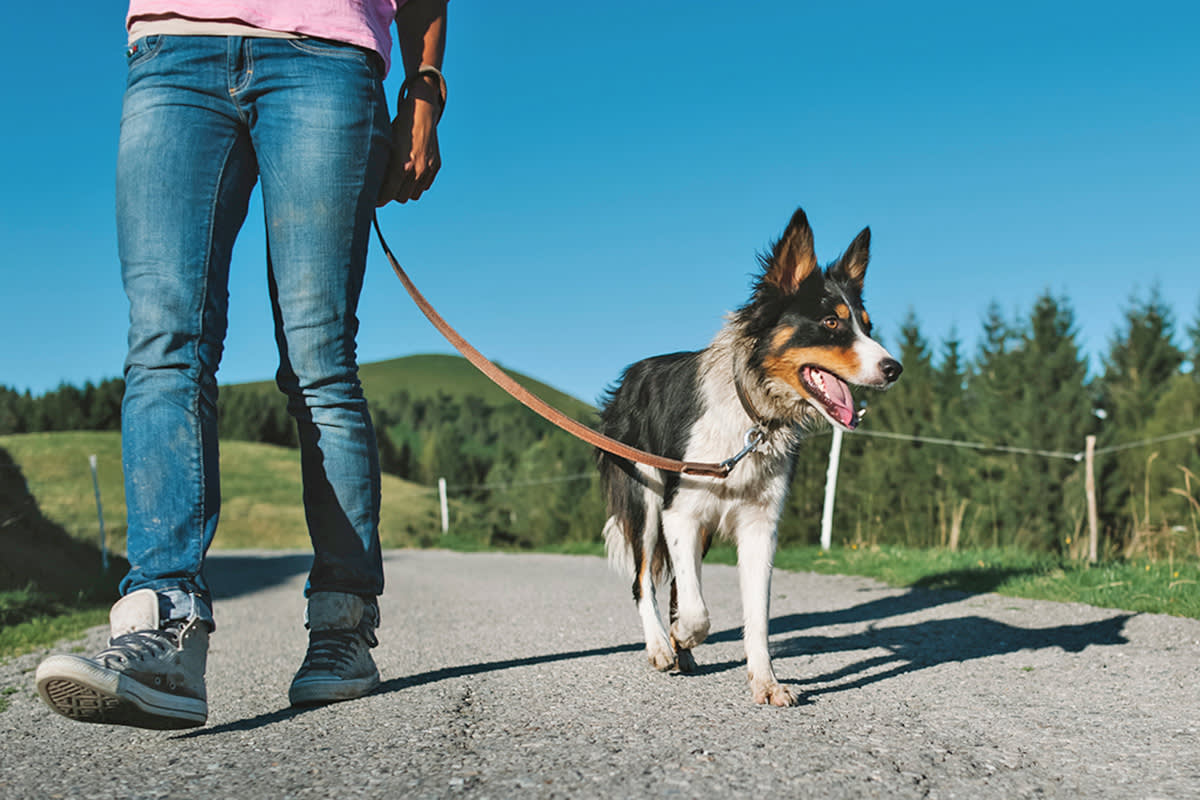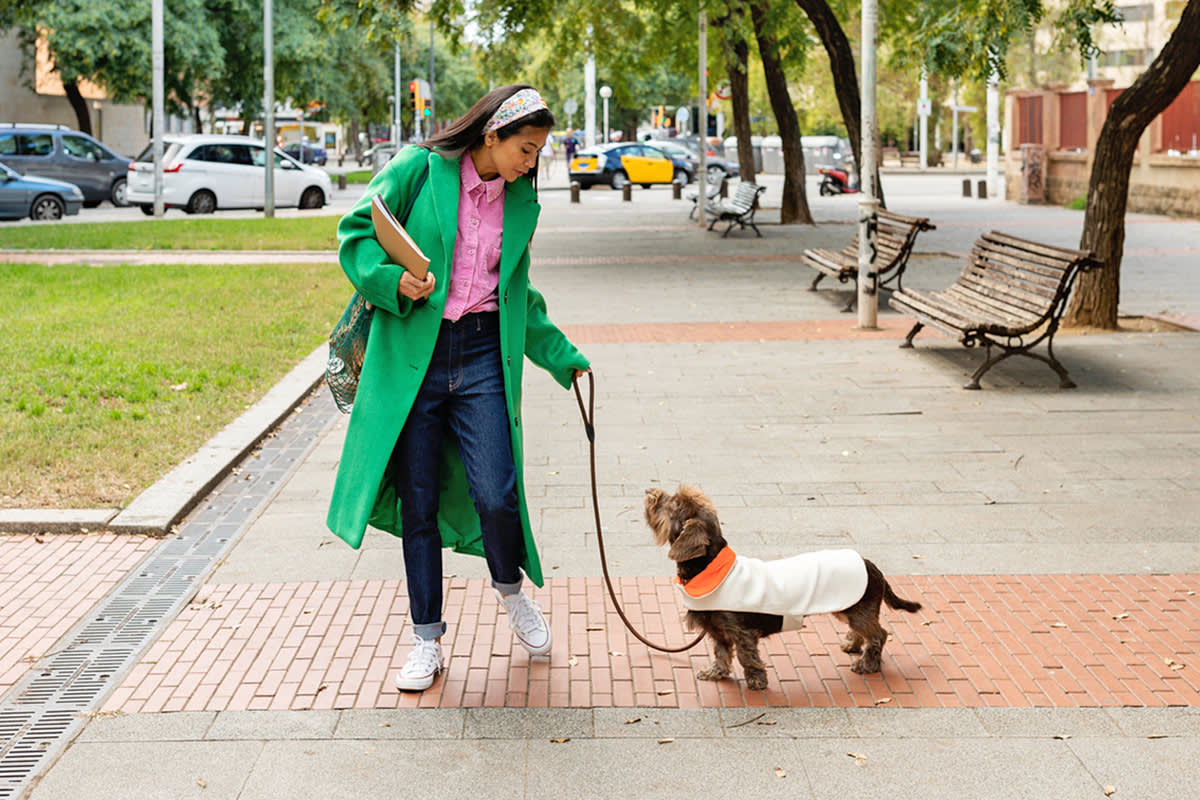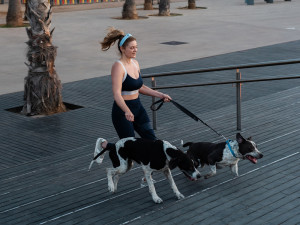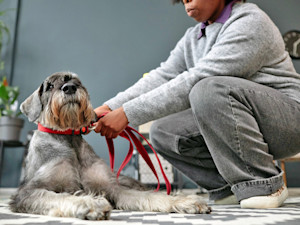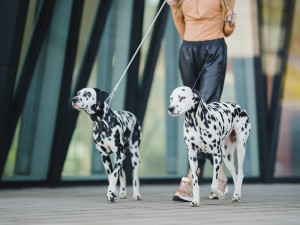7 Dog-Walking Myths You Should Never Believe
Not everything you're told about taking care of dogs is true.
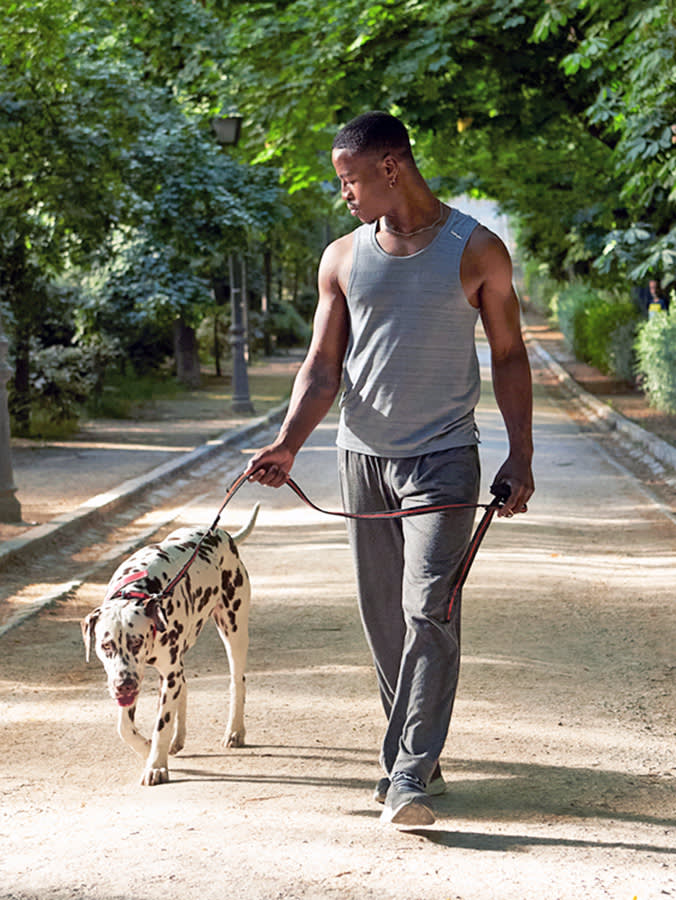
Share Article
Let’s be real — walking your dog isn’t just some boring chore. For most dogs, it’s basically their version of scrolling on TikTok, hitting the gym to burn off all those training treats, and their daily meet-up all in one. And it’s not just about those wins.
Walks are sensory adventures where dogs get to use their sniffing superpower. Word on the street is that walks are essential for keeping your pup happy, healthy, and into you. It’s simple, right? Just walk your dog, and all will be well. Sadly, no. It turns out even this activity, almost universally acknowledged to be what dogs need and want, has plenty of myths associated with it. Keep reading for seven myths that need to be debunked.
Every dog needs a walk every day.
Somewhere along the way, “You must walk your dog every single day, or you’re a terrible person” became the norm. Honestly, anyone who says that needs to calm down. Yes, most dogs adore their daily walks. But that doesn’t mean every dog does. Some pups get stressed or afraid when (literally) stepping outside their comfort zone. The world is loud, chaotic, and overwhelming. You’re actually being kind to those dogs if you skip the daily walk.
They might prefer a game of fetch in the yard or sniffing around their usual safe spots. Also, newly adopted dogs are just adjusting to a whole new world. Throwing them into the street like, “Let’s go see the city!” on day one is like dragging jet-lagged travelers on an all-day tour. Let them settle in. Walks can wait a bit.
Dogs should always be walked on a leash.
Sure, if there are laws or safety risks that require it, absolutely use the leash. But if you’re somewhere that’s off-leash-friendly and your dog’s not a flight risk? Let them be free. Off-leash joy hits different. Running around, zig-zagging through trees, and sniffing everything is so much fun.
How much do you spend on your pet per year?

Dogs want to make choices, run at full speed, head here, there, and everywhere, and run back and forth between you and all the trees and grassy spots. But hey, if off-leash isn’t an option where you live, that’s OK. Dogs who walk on-leash have an awesome time out there, too.
A tired dog is a happy dog.
OK, this one’s sort of true, but not in the way most people think. It’s not about wearing them out like a toddler at a trampoline park. It’s about getting those happy brain chemicals flowing.
Exercise — especially running — releases endocannabinoids. These chill-out chemicals help reduce anxiety and boost mood, and they can even lessen pain. That calm you see after a walk? That’s contentment, not exhaustion.
You have to keep dogs moving on walks to get the benefits.
This nonsense that you should “keep ’em moving” is so damaging for dogs. They want to experience the world, not go to a boring cardio class. For many dogs, it’s all about the chance to mosey, meander, and sniff to their heart’s content.
If you hurry them along every time they stop to sniff or to enjoy the sunlight on their face, you’re not making the walk better — you’re getting in the way of their enjoyment of it. What makes walks magical to most dogs is the smells and the chance to wander this way and that to explore what catches their attention. Walks should be more like “sniffaris” (aka little journeys on which they can smell the world), not forced marches.
They’re not tired if they are pulling on the leash.
Nope. Pulling isn’t about energy level. It’s more like, “OMG, I see (or smell) something!!” Excitement, habit, frustration — they all play a part. Even high-energy dogs can walk like angels if they’ve been taught how. Being energetic and having leash manners are not mutually exclusive, but dogs need to be taught to control their arousal and to behave as you want them to by keeping a loose leash.
Yes, high-energy dogs may be more likely to pull than less-energetic ones, but dogs of all sorts need to be trained to walk in a teamwork kind of way. Pro tip: If your dog is Team Waterskiing (you’ll know it when you see it) on walks, try an out-and-back route instead of a loop. A lot of dogs chill out on the way home because they are not so excited for the walk to end by returning home. Plus, the smells aren’t as exciting the second time around.
Older dogs don’t need walks.
Except they do. Just because your senior dog isn’t going full zoomies mode when they don’t get a walk doesn’t mean they don’t miss it. Older dogs might not start barking, pacing, whining, and chewing on things if they miss a walk, but they still want to see the world, even if it’s just a slow stroll to the corner and back.
Let dogs in their golden years live a little. Maybe it’s not a problem for you when an older dog doesn’t get a walk because they don’t act in ways that make you suffer. It’s still a problem for them because their quality of life and daily joy suffer.
Walks always tire dogs out.
Ha! If only. You know how you sometimes take a walk to wake up your brain rather than have your third iced coffee of the day? Yeah, dogs are kind of like that, especially the rocket-fueled types who could run 10 miles before breakfast and then gleefully look at you like, “What’s next?”
For them, a walk isn’t exhausting — it’s energizing. If you’re trying to wear them out, they probably need a real workout: think fetch until your arm rebels, sprints at the park, or an epic playdate with their BFF. Otherwise, that walk? It’s just them getting warmed up to cause more chaos.

Karen B. London, PhD, CAAB, CPDT-KA
Karen B. London is a certified applied animal behaviorist (CAAB) and certified professional dog trainer (CPDT) who specializes in working with dogs with serious behavioral issues, including aggression. She has written for a variety of magazines including The Bark, Clean Run, and the APDT Chronicle of the Dog, and has published in scientific journals including Behavioral Ecology and Sociobiology, Ethology, Ecology, and Evolution, the Journal of Insect Behavior, and Insectes Sociaux. She is the author of seven books about dog training and canine behavior, including the forthcoming My Dog's Mystery Adventure: And Other Stories From a Canine Behaviorist and Dog Trainer.
Related articles
![Woman walking her small white dog outside on a leash.]()
Walking the Dog Doesn’t Have to Be a Chore—What to Try Instead
Here are some other ways you can get some quality time and exercise with your pup.
![A man with a dog on a hike stoping to enjoy a beautiful overlook on a cliff.]()
How to Take Silly Little Mental Health Hikes With Your Dog
It’s good for you both — promise.
![Woman in athletic clothing jogging up stairs in a tropical city with her two dogs on leashes running with her]()
Running With Your Dog Is Possible — It Doesn’t Just Happen in Photoshoots
You — yes you! — can be one of those fun people who runs with your dog. Just be smart about it.
![Person walking their dog in the street]()
How to Leash-Train a Puppy or Dog
Don’t let your new dog walk you.
![Woman leashing up her dog to get ready for a walk.]()
Best Training Collars for Dogs
Get expert advice to find what will work for your pup.
![Owner walking two Dalmatians downtown]()
How to Stop a Dog From Pulling on the Leash
Don’t worry: You’re not doomed to be pulled down the street forever.
